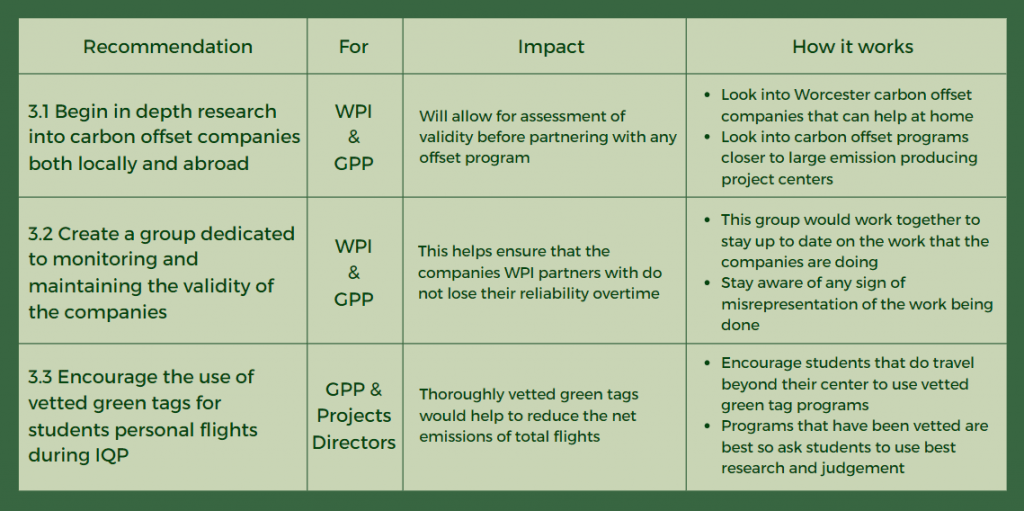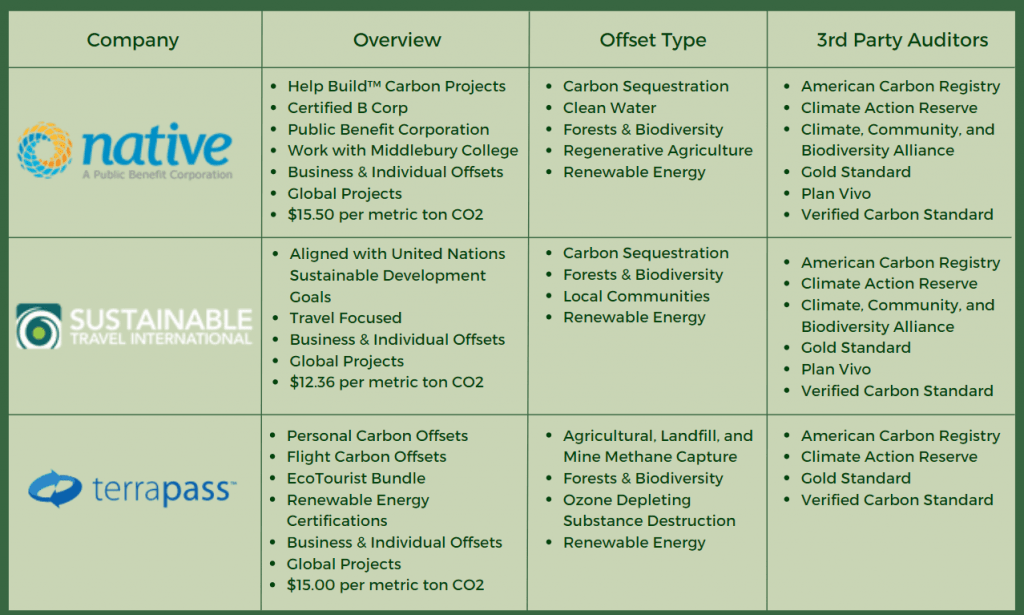A growing contribution to the global issue of climate change is the extensive emissions of greenhouse gases, specifically carbon dioxide (CO2). While reducing our emissions is the ideal solution, thus stopping our carbon footprints before they even begin, this isn’t always an option. Many CO2 emissions are produced by everyday activities that are deeply embedded in our lives such as the use of cars, electricity, heat, etc. For emissions we simply cannot completely rid ourselves of, carbon offsets become the next best option. Carbon offset programs are plans to repay or remove CO2 already emitted in order to offset the issues they create.
There are four types of offset programs that can be implemented in order to mitigate carbon emissions. These methods include forestry and conservation, renewable energy, waste to energy, and community projects (Such as those completed in IQP). Forestry and Conservation are seen in all of the programs that use reforestation. The trees planted will absorb the CO2 from the air and release oxygen, offsetting the CO2 that was emitted into the air. Renewable energy is also very popular and can be seen in projects that use windmills or solar panels as a clean source of energy. In a similar way, waste to energy uses the emissions directly from the air to generate clean energy. Finally, there are community projects. These are projects that increase the technology and energy efficiency of underdeveloped communities.
While carbon offsets seem ideal, they are not a perfect solution to the emission issues our climate is facing. There are a lot of controversies surrounding these programs, as many feel that companies use the phrase to greenwash people to believe they are more sustainable. With that being said, we understand that carbon offsets are more of a temporary solution, however, they are a good first step to addressing our carbon footprints. Our suggestion for carbon offsets programs is that they are thoroughly vetted for validity and reliability and that they are transparent about what offset work they are doing. For instance, a carbon offset company may promise that they have planted 2,000 trees. What they don’t say is how many of those trees survived to be able to offset? How many of those trees were invasive species that damaged an ecosystem? There is a lot of information left out when explaining carbon offsets and that is why they are a venture to be taken with severe caution.
Recommendations:

Offset Companies:


